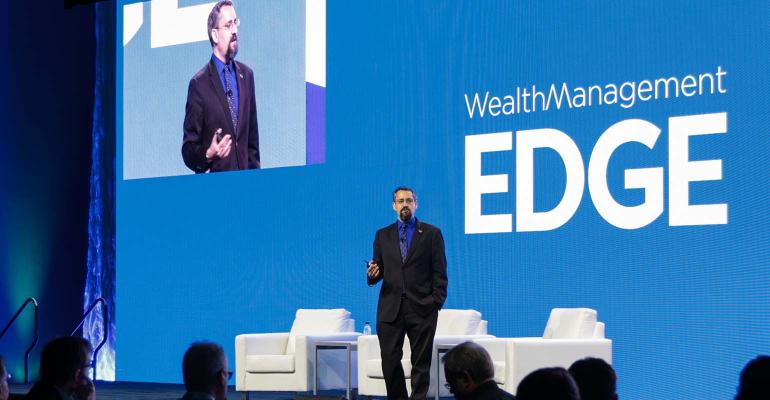The “growthiest” firms are those that rely the least on client referrals, XYPN co-founder Michael Kitces said at the Wealth Management EDGE conference at The Diplomat Beach Resort in Hollywood, Fla.
It’s not that client referrals don’t occur among successful firms, but the revenue from the rest of their marketing spend is obliterating the new client revenue they generate via referrals.
Their approach doesn’t rely on advisors to drive growth, because as they (and their time) become more expensive, it makes less sense to put them in the position of firm marketers, as they end up being “really expensive, inefficient marketers” who don’t have the time to do it right, he said.
In a separate fireside chat, Klein agreed, saying, "advisors don’t really want to be salespeople."
“We’re the one industry that I can find that thrusts people with finance degrees and economic degrees who are focused on practitioners into being the growth engine for the firm,” he said.
During his presentation, Kitces quizzed attendees about how much they spend on marketing, with almost 50% of respondents saying they spent 3% or less. But Kitces argued this doesn’t reflect what firms really spend, because as advisors build out relationships, work referrals, network and do other client development tasks, a portion of the firm’s marketing money really shows up in advisor compensation.
By moving a portion of the advisor compensation to the firm’s marketing allocation, Kitces’ team uncovered a surprising trend.
After breaking down firm size, as well as their hard dollar marketing spend and the amount of advisor compensation (and time) dedicated to marketing, they found that the bigger the firm gets, the more the hard dollar spend goes down while the advisor compensation devoted to marketing spikes upward.
For firms with more than $1.5 million in revenue, 6.6% of the share of revenue was devoted to paying advisors for marketing, compared with only 1.7% of hard marketing dollars. It’s a scaling problem, in a sense, Kitces said. As the business grows, the advisor gets more expensive (this isn’t necessarily a problem for owners, as their advisor is driving big business).
“The more we pay advisors to service their existing clients, the more expensive it gets to pay them to get new clients,” he said. “And it literally starts breaking our marketing.”
Marketing tends to be one of the most scalable parts of an advisory business, but by relying on advisor referrals and self-marketing, firms tend to commit to a strategy that scales the least, according to Kitces. He found advisors often rely on referrals because they don’t have the time to do anything else, but it simultaneously becomes harder to ask for referrals because if they are is successful, the onboarded client must be valuable enough to be worth the time spent.
For high-growth advisors under $250,000 in revenue, referrals tended to make up 27% of the new client revenue, compared to 63% for non-high-growth firms. But starting in the $500,000-$749,000 range, the disparity grew even more drastic, with high-growth firms relying on referrals for 33% of new client revenue, compared to 83% at other firms (ending with 42% vs. 86% among firms with revenue exceeding $1.5 million).
For Klein, the process for advisors driving growth remains “a bit of the Wild West” at many firms, and the high-growth firms with reduced referral percentages are finding that a standard set of tools actually drives the results firms are seeking.
“What we’ve come to realize, and what we’ve been building for the past decade, is if you equip that fiduciary advisor to drive that process in a consistent way, you’re going to turn that fiduciary advisor into the growth engine for the firm without twisting them into something they don’t actually want to be,” Klein said.





